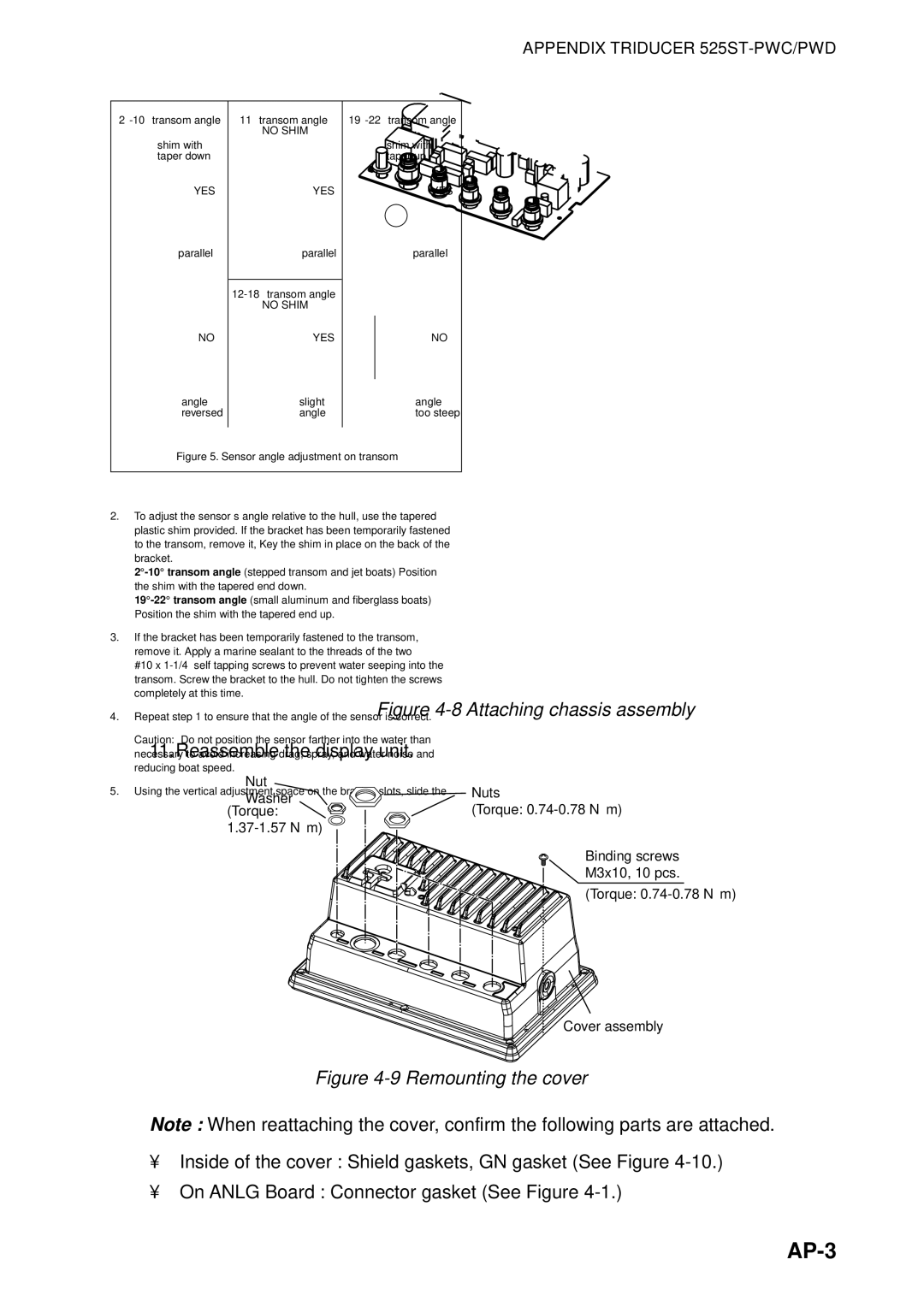GP-1850DF specifications
Furuno is renowned for its high-quality marine electronics, and the GP-1850DF and GP-1850F are no exceptions. These advanced GPS chart plotters are designed to meet the needs of both professional mariners and recreational boaters alike.The GP-1850DF is equipped with a powerful 12-channel GPS that provides fast and accurate positioning information, while the GP-1850F features a sturdy built-in fish finder, making it ideal for anglers. Both units boast a brilliant color display that enhances visibility in various lighting conditions, ensuring that users can easily read information on the screen, even in direct sunlight.
One of the standout features of these models is their compatibility with a variety of chart formats, including C-MAP, and Furuno’s proprietary raster charts. This flexibility allows users to choose from a broad range of navigational charts, catering to specific regional needs and preferences. The intuitive interface of the GP-1850 series simplifies navigation, offering menu-driven commands and support for multiple languages.
Furuno has integrated advanced sonar technology in the GP-1850F model, including a high-resolution fish finder capable of detecting fish signatures with remarkable precision. The dual-frequency capabilities enable users to switch between higher frequencies for shallow water fishing and lower frequencies for deeper waters. This enriches the fishing experience while improving catch rates.
Moreover, both devices feature a built-in waypoint register, allowing users to store up to 1,000 waypoints, which can be essential for returning to promising fishing spots or navigating back to port. The navigation functions also include routes and track recording, empowering boaters to create custom paths and review their previous journeys.
The GP-1850 series also places a high emphasis on safety, incorporating features like man overboard (MOB) alarms and route alarms to enhance on-water safety. Additionally, they are designed to withstand the harsh marine environment, with waterproof housings that ensure durability during adverse weather conditions.
In conclusion, the Furuno GP-1850DF and GP-1850F models provide an exceptional combination of performance, reliability, and user-friendly features, making them a preferred choice for both fishermen and navigators. Their adaptability in various maritime situations, alongside advanced technologies, cements their reputation as essential tools for successful and safe voyages on the water.

